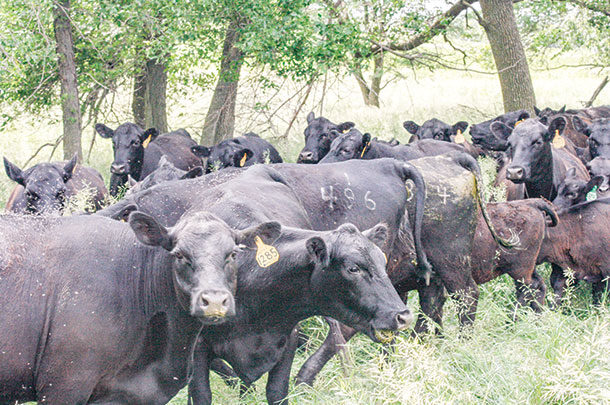Summer is typically a highly anticipated season. School is out, vacations are planned and the long, sunny days are enjoyed. But for cattle producers, there is one summertime occurrence that is not looked forward to – pinkeye within the cattle herd.
Pinkeye is a pain to cattle and the producer because it can reduce production gains by a whopping 30 to 50 pounds. In short, when cattle are affected by pinkeye, they don’t feel their best – and they are going to eat less. As a rule of thumb, if one eye is afflicted, producers can expect reduced weight gains of 35 pounds per animal. If an animal has pinkeye in both eyes, the losses can be as high as 50 pounds per animal. Additional losses are attributed to costs to treat the infection, animal health products and labor.
Thus, within the livestock industry, we recognize it is much better to prevent pinkeye from occurring than to treat it after the fact. Fortunately, for cattle producers there are several management strategies – and improved vaccines – available to prevent pinkeye issues. But before we dive into those, let’s get a better understanding for how pinkeye is caused in the first place.
Starts with a scratch
Many people blame face flies for causing pinkeye. That is not completely accurate. Pinkeye is an opportunistic bacteria that is spread by face flies – but for the bacteria to invade the animal’s cornea, something first has to scratch the cornea’s surface. Thus, tall weeds and grass seedheads, and even dust particles blown around in the wind, are the initial pinkeye-causing culprit.
Once a scratch on the white part of the eye is present, face flies which feed on the mucous membranes of the animal’s nose and eyes can spread the bacterial infection to the animal’s eye. And because this bacterial infection is contagious, face flies can easily spread pinkeye to any cornea with a scratch.
Pinkeye is most often caused by Moraxella bovis, a bacterial organism. However, a new bacterial strain – Moraxella bovoculi – has now also been documented to cause pinkeye in cattle. Previously, M. bovoculi only affected goats and sheep.
Dual strategy to prevent
Most veterinarians – myself included – recommend a dual strategy to prevent pinkeye risk. This includes controlling face flies and administering preventative pinkeye vaccines.
Controlling face flies is important to help reduce the spread of the Moraxella bacteria that can infect and inflame a cornea scratch and result in pinkeye. Pyrethroid fly tags are commonly used, but it is important to recognize these tags only help repel face flies from around the animal’s face. Fly tags do not kill face flies.
Therefore, along with fly tags, I recommend a feed-through fly control product, which has additives that contain an insect growth regulator (IGR). These products can effectively be fed to cattle on grass with a free-choice mineral or feed supplement. Feed-throughs control both horn flies and face flies in the cattle dung where flies are laying their eggs. These products kill the fly larvae or prevent the larvae from maturing depending on the mode of action.
Because feed-through fly control products use a different mode of action (diflubenzuron) than fly tag and other chemical fly control products, another benefit is that feed-throughs have no known resistance.
The second part of this dual control strategy is to vaccinate for pinkeye, timed at about 30 days prior to turnout on grass. This would be in late winter for Southern states and spring in Northern states to coincide just prior to peak face fly populations.
In selecting a pinkeye vaccine, an important consideration is to select a product that provides protection against more than one strain of M. bovis as well as M. bovoculi. New vaccine products have recently been conditionally licensed and made commercially available with this cross-protection.
As always, it is important to work with your local veterinarian to determine the appropriate timing and administration of vaccines in conjunction with other vaccination protocols.
The bottom line is: If pinkeye has taken a toll on your cattle herd in the past, give these extra efforts a try. Enhancing fly control and administering a pinkeye vaccine can make a difference in pinkeye prevention – and that could certainly help you enjoy summer a little more.









